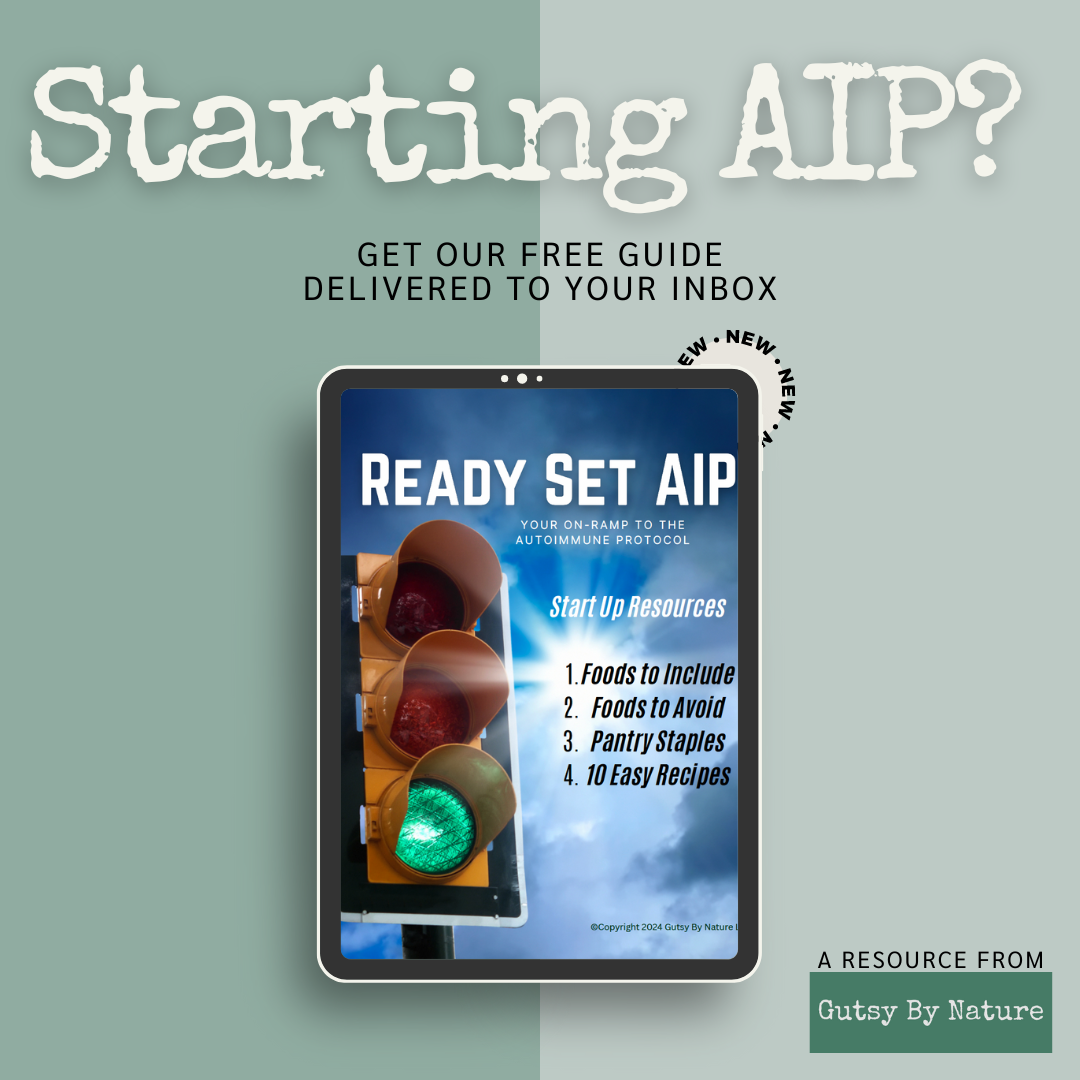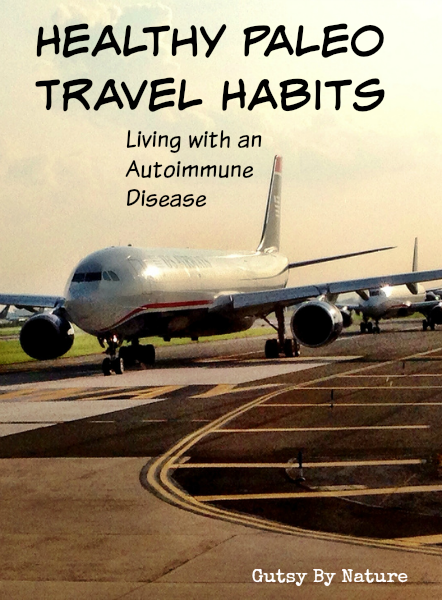Things have been pretty quiet around here lately because my “real” life has been extra busy and I’ve spent much of the past month on the road for business and pleasure, doing my best to stay on my healing path. I’ve been eating some form of a paleo or paleo-inspired diet now for long enough that the food part has become relatively easy, but the challenge comes in making sure I stick to all the other aspects of a healthy lifestyle. It is challenging enough to prioritize and optimize sleep, exercise, and stress reduction when you are at home; now try balancing all of that while crossing time zones, staying in hotels, attending high stakes meetings, and being on someone else’s schedule!
Like everything in this healing journey, developing and sticking to these habits remains a work in progress for me so I don’t claim to have all the answers, but I thought it might be helpful to share what I have been trying to do and my specific tips for healthy paleo travel habits – particularly for people with Crohn’s disease or other autoimmune diseases.
Priority #1: Time to wind down before bed
I bet you would have guessed that finding clean paleo food would be my number one healthy paleo travel habit priority. It isn’t. I’ve discovered that I do more damage to myself when I string together two or more nights of poor sleep than eating less than ideal food for a couple days.
When I travel, I’m very protective of my sleep. I make it a general rule for myself that I time my travel to arrive or return to my hotel room in time to get at least 7 hours of sleep (preferably more) and that I have at least an hour to unwind before the time I need to go to bed. That one hour of unwinding time is key… I simply can’t go directly from go-go-go to asleep and need an hour (or more) of quiet transition time. During that hour, I turn off the computer and hide my phone so brain is not still at work. I also put on amber glasses to reduce the effects of blue-light exposure and promote the natural production of melatonin, the major hormone that controls sleep and wake cycles.
These are the goggles I use:
Sometimes even my best intentions don’t allow for this hour of wind down time. Delayed flights, traffic jams, mandatory evening work activities… when they happen, I try not to stress out and just pop a 5 gram melatonin supplement before going to bed.
Priority #2: Get high quality sleep
It doesn’t matter if you get into bed on time if you can’t fall asleep or if you are waking up throughout the night. Strange noises and an unfamiliar bed can combine to destroy your sleep quality, but I’ve found a couple tricks to combat that.
First, I prepare the room. I make sure to close all blackout drapes as tightly as possible and turn around any glowing clocks or obtrusive lights. I know some people who go as far as to tape over LED lights on things they can’t turn off, but I don’t bother with that and instead just eliminate the bright things. I also know that chances are pretty good that I’ll wake up sometime during the night and want to find the bathroom, so I usually turn on the bathroom light and then shut the door, allowing the light that comes out around the edges of the door to be a subdued nightlight to guide me there and back. I double check that the alarm on my phone is set for the time I need to get up and then I plug it into a charger in an outlet as far as possible from the bed, so that I’m not tempted to look at it until morning.
Second, I travel with lightweight and inexpensive white noise machine. I also sleep with it at home, even though I don’t really need it there so that the sounds are familiar to me when I do need it in a hotel. This is the machine I have:
My final trick has to do with the temperature of the room as well as noise. Hotel heating and air conditioning units tend to be loud and annoying as they cycle on and off. I find that I sleep best in a cool room anyway, so if it is winter time I blast the heat during my wind down time before bed and then turn the heat completely off until morning. In the summer I do the opposite and set the temperature of the air conditioner extra cool and set the unit or thermostat to “fan” so that it runs continually all night.
Priority #3: Manage stress
It’s a fact that you can’t avoid. Travel is stressful, especially when the travel is work related, as much of mine is. But stress is not inherently bad; it’s all about how you deal with that stress. My hour of wind down time before bed helps with that and when I am dealing with extra stress like a big client meeting or travel snafus, I will make sure that the TV stays off during that time and instead listen to a guided meditation. Some of my favorites are from Tara Brach and Jon Kabat-Zinn.
Another key aspect of managing stress for me is getting some moderate exercise. If possible, I’ll plan some time to explore the city I’m visiting on foot but many times that isn’t feasible and so I’ll head to the hotel gym and walk on the treadmill for 30 minutes or so. I also try to keep up my yoga practice with a simple self guided routine in the morning or if I have some extra time, I will look for a studio in the area where I am staying and drop in on a class.
Priority #4: Eat as clean as possible
…but don’t stress about it too much. I don’t use travel as an excuse to go completely off the rails, but I definitely embrace the philosophy of not being a paleo perfectionist when I am away from home. I have some hard and fast rules (no gluten) and I won’t eat absolute crap, but I don’t worry that the eggs from the hotel breakfast are almost certainly not free range, that the steak at the chain restaurant is not grass fed, or that I’m unlikely to find organic fruits and vegetables and most foods are going to be cooked in oils I wouldn’t use at home. I focus on getting as much nutrient density as I can while minimizing the negative. So, I select hard boiled or poached eggs instead of an omelet, select the lean sirloin steak since most of the health negatives in conventional meat are in the fat, and try to choose fruits and vegetables that are on the “clean 15 list” while skipping the “dirty dozen” and opt for them to be steamed or raw when possible.
Of course, this strategy of taking a middle road doesn’t apply if you are in the elimination phase of the paleo autoimmune protocol (AIP) and/or know that you are dealing with specific food intolerances or allergies. For advice on navigating that, check out these posts from some folks who have “been there, done that” and lived to tell the tale!
- Business Travel on the Autoimmune Protocol – Angie Alt, guest post on The Paleo Mom
- Airplane Travel on the Paleo Autoimmune Protocol – Eileen Laird of Phoenix Helix
- Travel Tips While On the Paleo Autoimmune Protocol – Mickey Trescott of Autoimmune Paleo




6 replies on “Healthy Paleo Travel Habits: Living with an Autoimmune Disease”
[…] Gutsy By Nature talks about to get quality sleep and manage stress while traveling, two things that are very connected to autoimmune flares. […]
I love that you focused on sleep and stress while traveling, two things rarely mentioned in travel articles and oh so important! I’ve added this to my Travel Link Love post, and am also sharing on Facebook this week.
[…] at Gutsy By Nature, Jaime Hartman has a great article about staying healthy when you’re on the road. While the […]
It’s always funny to me how complex sounding topics such as autoimmunity and traveling can get broken down into such simple takeaways such as managing stress..
As Dr. Hyman has told me, 95% of all illness is either caused by or worsened by stress.
[…] Resource: Gutsy By Nature’s Healthy Travel article. […]
[…] months or so. Check out my original review and be on the look out for an update. I also wrote up my tips for healthy travel, even while dealing with an autoimmune disease, and a post on why you might want to cut out coffee […]